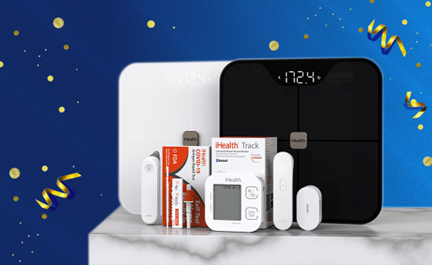Troubleshooting your blood sugars: The Dawn Phenomenon
There are two types of reactions that cause high blood sugars even though you haven't eaten anything: The Somoygi effect and the Dawn Phenomenon.
Somoygi effect and dawn phenomenon are similar in that both lead to high morning blood glucose readings because of a hormone release that causes the liver to release glucose into the blood. The difference, however, is that dawn phenomenon is not caused by hypoglycemia, but by a random release of the triggering hormones. For the Somoygi effect to occur, your blood sugars typically need to drop to low levels first to trigger the liver's output of glucose. The Dawn phenomenon is tricky, since the hormone fluctuation could happen even when there is no apparent reason. The sugars may just rise.
How To Treat The Dawn Phenomenon?
One of the very first (and obvious) steps that you should take is to contact your Diabetes Educator in your Care Team or your Endocrinologist. Start checking your blood sugars periodically throughout the night: before bed, once or twice in the middle of the night, and once fasting when you wake up. Once you and your specialist figure out how your blood sugar levels behave overnight, here are some suggestions that he or she may start to incorporate:
- Take long-acting insulin in the evening so its peak action happens when your blood sugars start rising.
- Change the type of insulin you take in the evening.
- Start incorporating a continuous glucose monitor (CGM) to avoid the Dawn phenomenon
- Take a small amount of insulin overnight if your blood sugar goes up during the night.
- Switch to an insulin pump, which can be programmed to automatically increase your basal rates in the morning.
September 2, 2020 | Categories: Basic, Diabetes, Diabetes Basic, Diabetes Monitoring, Monitoring, Pattern Management | Comments Off
This feature is coming soon
-
May 08, 2024
-
March 04, 2024
-
October 10, 2023
This feature is coming soon
You May Also Like
Title placeholder
posted_date placeholder
Title placeholder
posted_date placeholder
Title placeholder
posted_date placeholder
Title placeholder
posted_date placeholder
Title placeholder
posted_date placeholder
Title placeholder
posted_date placeholder
Title placeholder
posted_date placeholder
Title placeholder
posted_date placeholder
Title placeholder
posted_date placeholder
Title placeholder
posted_date placeholder
Title placeholder
posted_date placeholder
Title placeholder
posted_date placeholder
Title placeholder
posted_date placeholder
Title placeholder
posted_date placeholder
Title placeholder
posted_date placeholder



